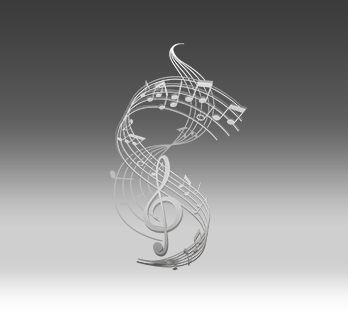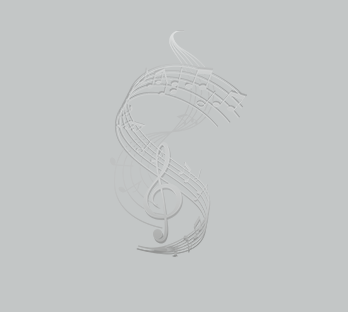GRAND PIANO



Grand piano. The French “royal” means “kingly” or “fit for a king”. As a co-name of a piano with a wing-shaped body, it stuck in Russian. In other languages, the instrument has the following names: English: grand pianoforte, grand piano; Spanish: piano de cola; Italian: pianoforte a coda, piano a coda; German: Flügel; Portuguese: piano de cauda; French: piano à queue.
The design of grand piano — the design of the piano forte — in principle — has been forming for a very long time. But it was only during the late Baroque period that the music player finally became disillusioned with the possibilities of clavichord and harpsichord, namely: these instruments no longer met the requirements that were imposed at that time to producing a truly flexible sound dynamics. An instrument was required for playing in large concert halls, for soloing with orchestra. The history of the masters’ numerous attempts to create a stringed hammer-type keyed instrument of a wing-shape has preserved three reliable facts.
It was believed (and in a number of papers it is still believed) that the hammer mechanics of various designs were devised by Jean Marius (Paris, 1716), Christoph Gottlieb Schröter (Dresden, 1717) and, finally, Bartolomeo Christophory (Florence, 1698). Unlike the first two inventors, the master made a hammer harpsichord with his own hands — “nuova invenzione d’un Gravecembalo col piano e’ forte”. His instrument was used for playing.
The talent of Bartolomeo dI Francesco Christophory (1655–1731) was noticed by the Duke Ferdinand dI Medici, who employed him in Florence. Work under the Duke’s patronage was a happy time of the master’s life. After Ferdinand died in 1713, the duke’s heirs lost interest in music, and Christophory found himself out of job.
Three pianos made by Christophory have survived. The oldest grand piano dates from 1720 and is stored in the New York Metropolitan Museum. The second one was made in 1722 and it is stored in Rome at the Museum of Musical Instruments. The third one, which is in the most authentic condition, dates from 1726. It is held at the Dresden Museum of Musical Instruments.
In 1719, Christophory’s hammer-action mechanics was described by the Veronian Scipio MaffeI in a detailed manner, with a drawing attached. Thus, the date of the appearance of the horizontal piano, and the pianoforte appeared in the press: circa 1718. In the third quarter of the 20th century, the researchers found out that in 1711, the very Maffei, yet anonymously, published information about the Christophory’s mechanics in his “Giornale deI LetteratI d’Italia”, and two years earlier, in Florence, he had seen the hammer-action instrument made by Christophory (later, there was ascertained that this grand piano was equipped with 2-stringed choirs and had a range from C of great octave to c of the three-line octave). MaffeI visited Florence in order to ask the Duke Ferdinand de MedicI to patronize his magazine. So, the second date of the invention of the piano — 1709 — has appeared.
In 1968, M. Fabbri, in his publications, documented that actually the pianoforte (horizontal piano) as such was invented in 1698. His conclusions were supported, for example, by the researchers J. G. van der Meer in 1986, B. Chizhek in 1999, S. Pollans and I. V. Rozanov in 2001, and others.
Based on the arguments stated by FabbrI and van der Meer, UNESCO declared 1998–1999 the year of the 300th anniversary of the piano.
The exact date of the appearance of the piano in Saint Petersburg is unknown. Following the vocabulary of the selected Russian-written sources, one can speak only of the early stage of endowing the term “piano” with modern meaning, and in the most general terms — of the instrument itself.
In the “Zeitung” and “Vedomosti” of the 18th and the first third of the 19th centuries, we have found over 170 contexts containing the terms “royal” and “grand piano”… Only once, in 1817, a newspaper directly identified the grand piano as a pianoforte: “...two recently brought Karelian birch pianofortes, called grand piano, of quite decent pitch, about 6 octaves with three pedals...” (“Vedomosti”. August 31, 1817. No. 70). We believe that an instrument with a wing-shaped body was meant under the “grand piano”. Finally, in several cases, the term piano appears in the “Vedomosti” 19th century already without any clarification.
1827: “Because of departure, an English grand piano of 6 octaves from F to F, made by Clementi, is sold...”
A unique copy of the museum piano stamped by M. ClementI evidences the above.
So, the term “grand piano” in the meaning of a pianoforte with a wing-shaped body was first mentioned in the Russian literature sources no later than September 1, 1786. Sometimes, the indicated meaning was hidden behind the accompanying terms, and sometimes, on the contrary, it became clear with their help. Not later than August 22, 1813 the term “grand piano” was first used without clarifying terms. In the 1820s the frequency of such use has gradually increased, becoming the norm.
P. S.
On June 5, 2001 in the Metropolitan Museum, I heard the Christophory’s piano sounding in the concert “Three Countertenors and Piano by Bartolomeo Christophory, 1720.” The instrument sounded from its expositional place, more precisely — from the pedestal, which was specially allotted among his confrères. I was sitting just three meters from the keyboard, all turned into a rumour.
The first thing that struck me was the beginning of the sound — the outbreak. Those moments when the hammer, striking the string, began rebounding… The sound was completely that of harpsichord! And I immediately understood how Christophory was to treat his invention. Probably, as a piano-like, i. e., an improved harpsichord. It seems that he never dreamed of endowing his offspring with a sound that was strikingly different from the harpsichord one.
What I discovered next, was the sound of the instrument as such. The sound, once arising and creating the image of the harpsichord, for a wonder departed — it became changeable, flexible, controlled and, most unexpectedly, it began singing, perfectly matching the tone of the countertenor. Later, sharing opinions on this matter with my colleagues from the Metropolitan Museum, we came to the conclusion that if compared with the human voice, Christophory is certain to bear the bell amongst all instruments.
The illusion of resemblance to vox humana was enhanced by the ability of the piano to graduate sound. Of course, for the modern perception, its piano and forte were tiny, moreover, some weakness in the response of uppercase strings sometimes made it impossible to catch them, but they were still distinguishable. The main idea and its hidden features (did Christophory guess about the prospective scale?) were clearly in the instrument. Now I couldn’t help but exclaim, “What kind of ear should Christophory’s contemporaries had to have in order to describe such a delicate sound with the epithet “rough”, comparing it with the sound of clavichord and harpsichord?! What should have happened to me — a listener of the 21st century — so as the opposite perception of the instrument became possible?!”
On June 8, returning home, I gave myself some kind of concert-panorama. First, I listened to the recording of clavichord and harpsichord. Then, the recording of the same “Christophory 1720”. This was followed by the recording of the piano in chronological order: the table-like of the 3rd quarter of the 18th century, the Viennese of 1799 made by Seidel, the piano secretairy of 1810, made by Weiss from Prague, the pyramidal piano of 1820, the grand piano of 1835–38 made by Streicher from Vienna — this way, I came to the sound of modern “Steinway”...
The colors of this parade, 300 years long, cannot be described for obvious reasons. However, why describe, if now almost everyone can open exactly the same sound panorama and draw their own conclusions about how the piano has changed since the days of Christophory, and what happened to our ears during the evolution of this instrument.
































